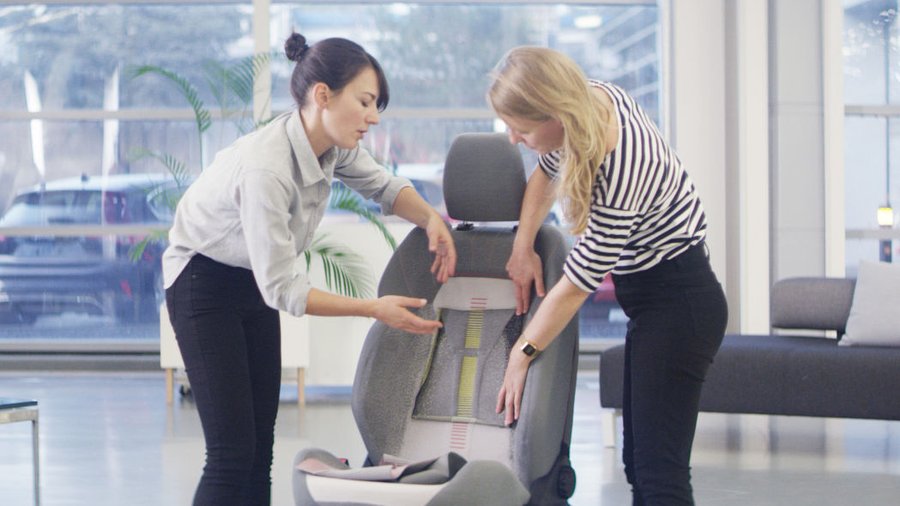Ford developing 3D-knitted seat covers that promise a more customizable upholstery future

Don't confuse Ford's work with scratchy sweaters from your grandparents, though. As you can see in photos and in video, the finished products look comparable to traditional cloth upholstery, but with a number of advantages. One of which is the fact that there's no wasted material with these covers from having panels cut out of them. The whole assembly process is simpler, too without the cutting nor the sewing together of all those pieces. This is good for the environment, as less material goes to the landfill or recycling, and it's good from a cost perspective as less material and labor is necessary.
Besides material usage and costs, Ford shows that its 3D-knitting process opens up potential for more unique upholstery and features. Instead of having to commission special fabrics for every cover, it can combine multiple strands of yarn in its knitting machines to get custom upholstery with just some minor changes. Different covers can have different amounts of padding or breathe-ability. Ford says it can incorporate various pockets and storage nooks into designs. It can even create some fancy graphics that change depending on what angle you're viewing them from. And in a world of mostly black or beige interiors, the potential for more cabin excitement is, well, exciting.
Ford hasn't said when 3D-knit upholstery will be available. The company did note that as a step toward a future of easily customized and changeable interiors, the new subcompact Ford Puma crossover has covers with a zipper for simple removal. So hopefully this technology is in the near, rather than far-flung future.
Related News
